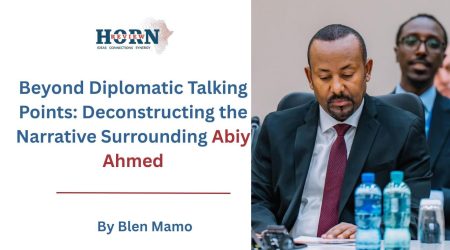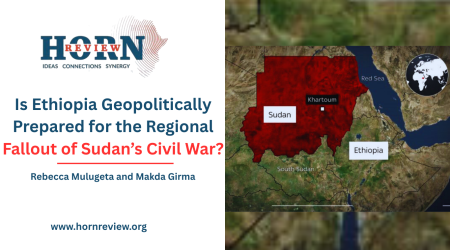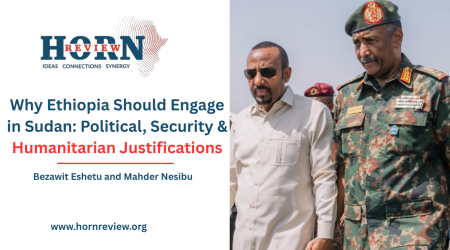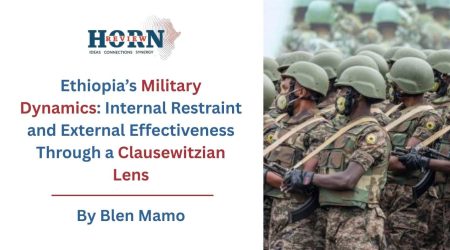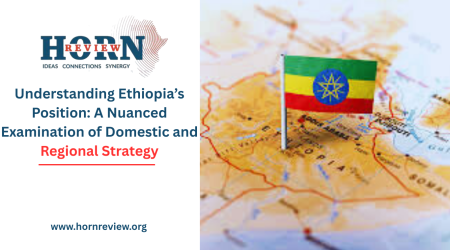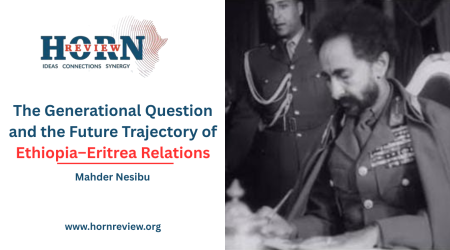
12
May
Ethiopia’s Transitional Government and the Questionable Birth of Eritrea: Authority Without Mandate?
Eritrea’s secession from Ethiopia in 1993 has frequently been cited as a model instance of consensual disintegration: a marginalized region achieves independence through a near-unanimous plebiscite, under the supervision of international observers, with the formal acquiescence of the parent state, and is promptly recognized by the global community. This narrative conforms, at least procedurally, to the archetype of peaceful and legitimate state creation. Yet a more probing inquiry reveals a profound legal and constitutional conundrum, did the Ethiopian authorities, who purported to consent to this territorial rupture, possess the democratic legitimacy or legal competence to do so?
Since the mid-20th century, international law has navigated a precarious balance between two foundational tenets, the right of peoples to self-determination and the principle of territorial integrity. Both are enshrined in the United Nations Charter and reiterated in the seminal 1970 Declaration on Principles of International Law Concerning Friendly Relations. The latter affirms that “all peoples” have the right to freely determine their political status, while simultaneously underscoring the inviolability of state boundaries, save for exceptional contexts such as decolonization or severe, systemic oppression. Outside these parameters, no affirmative right to secede exists under international law, instead, lawful secession requires either the sovereign state’s consent or a compelling remedial justification rooted in egregious human rights violations or an identifiable colonial history.
Eritrea’s trajectory, on its face, appeared to respect this equilibrium. Following the collapse of the Derg regime in May 1991, the newly installed Transitional Government of Ethiopia (TGE), under the aegis of the Ethiopian People’s Revolutionary Democratic Front (EPRDF), entered into the Addis Ababa Agreement with the Eritrean People’s Liberation Front. This accord committed both parties to a United Nations-supervised referendum on Eritrea’s independence, scheduled for 1993. In April 1992, the Eritrean authorities issued a Referendum Proclamation, and by April 1993, the plebiscite had been conducted with extraordinary participation, a reported 93 percent turnout, and 99.8 percent voting in favor of independence. The international observation team declared the process free and fair. Within days, Ethiopia formally recognized the result. A subsequent Ethiopia, Eritrea Friendship and Cooperation Agreement affirmed mutual borders and pledged peaceful relations. Eritrea was admitted to the United Nations on 28 May 1993.
By conventional metrics, this sequence of events demonstrated adherence to the informal but influential criteria for statehood, effective control, consent of the parent state, and broad international recognition, supplementing the Montevideo Convention’s formal criteria of a defined territory, population, and government. The appearance of legal orthodoxy, however, obscures critical questions regarding the authority of the Ethiopian state at the moment it ceded sovereignty over a substantial portion of its territory.
The Transitional Government, though internationally acknowledged as Ethiopia’s de facto authority, had assumed power through armed struggle rather than through a national electoral process. Its Council of Representatives was not the product of a competitive, inclusive, or fully participatory democratic exercise. Although elections were held in mid-1992, a significant number of opposition parties abstained, contesting the fairness and inclusivity of the process. Consequently, the government that sanctioned the Eritrean referendum lacked a definitive electoral mandate from the broader Ethiopian polity.
Equally salient is the procedural exclusivity of the referendum. The right to vote was restricted exclusively to Eritrean residents, while citizens of Ethiopia residing outside the region, those who stood to lose not merely a peripheral territory but a historically significant province, had no formal participatory role in this momentous decision. Comparative constitutional practice, particularly in transitional or post-authoritarian contexts, typically prescribes either a national referendum or a supermajority vote within a representative legislature before fundamental alterations to national borders can be effected.
Ethiopia’s Interim Charter, adopted in the immediate post-Derg period, acknowledged the principle of self-determination, including the right to secession. However, it failed to articulate a detailed procedural framework governing such a process. The Transitional Government’s commitment to honor the referendum’s outcome was grounded in political pragmatism and revolutionary consensus rather than any binding constitutional or statutory mechanism. It was not until the promulgation of the 1994 Constitution that Ethiopia formalized a legal procedure for secession, a two-thirds vote in the state council of the region seeking to secede, followed by a referendum conducted within the region. Had these safeguards existed in 1993, they might have lent greater legitimacy and clarity to the Ethiopian government’s consent.
In this context, the “consent” extended by the TGE appears more an expression of provisional authority than of settled constitutional legitimacy. Its legal foundation rested on de facto control, recognized by the international community, but not yet consolidated through enduring democratic institutions or a permanent legal order.
This fragility distinguishes Eritrea’s case from other instances of post–Cold War disintegration. Czechoslovakia’s dissolution, the so-called “Velvet Divorce”, was achieved through mutual parliamentary resolutions by elected representatives. South Sudan’s independence in 2011 was the culmination of a carefully negotiated Comprehensive Peace Agreement (CPA), ratified by an elected Sudanese government and followed by a monitored referendum. Even the dissolution of the Soviet Union, however chaotic, was presided over by constitutionally recognized authorities who executed the Belavezha Accords. In contrast, Ethiopia’s acquiescence to Eritrean independence occurred prior to the establishment of a permanent constitutional framework or the consolidation of a democratically legitimate central government.
Once the United Nations, the Organization of African Unity, and major global actors recognized Eritrea’s statehood, questions of legality gave way to diplomatic irrelevance. International law has long adhered to the principle of effectiveness in matters of statehood, once a political entity meets the factual criteria of statehood and garners recognition, questions of procedural legitimacy tend to become moot. By the summer of 1993, the global community had pivoted from adjudicating legality to preserving stability and preventing renewed conflict.
Nevertheless, viewed retrospectively, the procedural lacunae in Eritrea’s secession raise important normative and jurisprudential questions. The reliance on transitional authority, absent constitutional safeguards or representative legitimacy, challenges contemporary expectations that significant territorial and constitutional decisions require robust democratic validation. The notion that de facto control and international recognition suffice for legitimacy may have held sway in the early 1990s, but it now stands at odds with the increasing emphasis on constitutionalism, popular sovereignty, and legal formalism in modern statecraft.
Eritrea’s secession thus compels a broader inquiry, should a transitional regime, however internationally recognized, be empowered to effect irrevocable alterations to the national territory? Or ought such determinations await the establishment of a permanent constitutional order, endorsed through inclusive deliberative processes and representative institutions?
The international community’s pragmatic approach in the early post–Cold War era leaned toward expediency, emerging regimes were deemed competent to negotiate on behalf of the state so long as they commanded effective control and conferred stability. Yet the Eritrean precedent serves as a cautionary tale for jurists and policymakers alike. It underscores the need for embedding secession clauses within clearly defined constitutional frameworks, ones that reflect the will not merely of a region, but of the state in its entirety.
In sum, while Eritrea’s accession to statehood was peaceful, effective, and widely recognized, the legitimacy of the Ethiopian government’s consent remains open to principled challenge. That consent, forged in a transitional moment and devoid of the procedural and democratic rigor expected of foundational decisions, reflects the constraints of its time. As such, it offers a vital lens through which to interrogate the intersections of de facto power, legal authority, and democratic legitimacy in processes of state dissolution.
By Mahder Nesibu, Researcher, Horn Review

